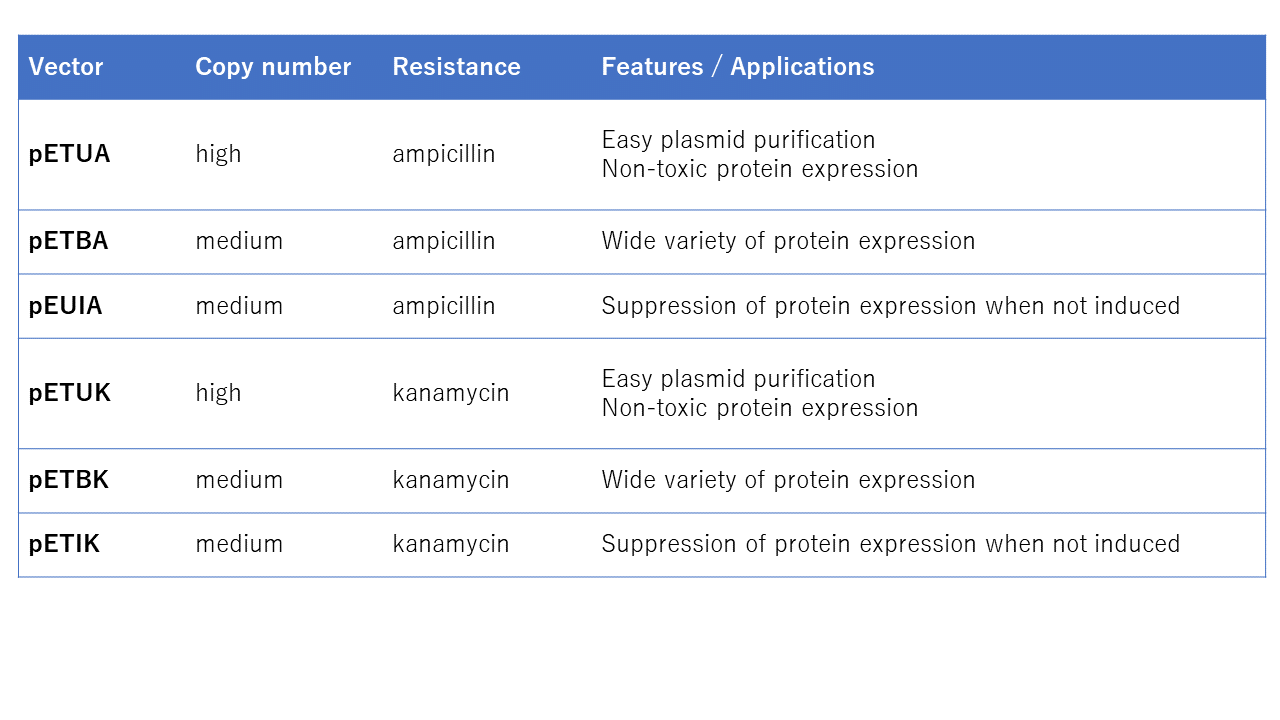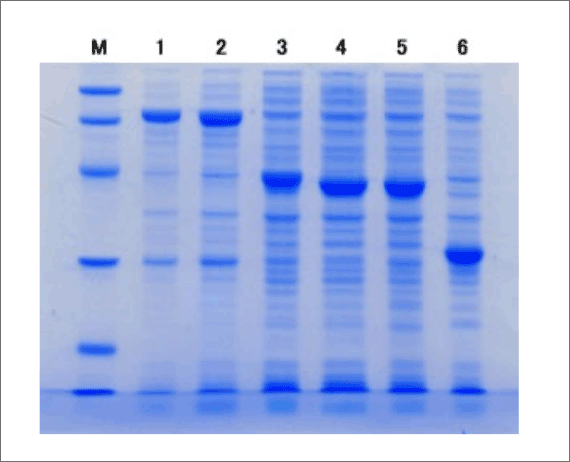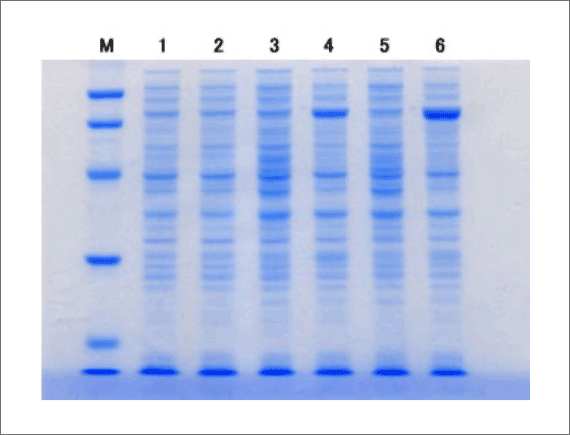T7 Expression Vectors
pET Expression Vector
Highlights
-
Vectors for protein expression in E. coli (T7 expression system).
Product informations
pET vector is an expression vector driven by T7 promoter. On the lineup of BDL, there are 3 types of vectors: high copy, medium copy, and vectors whose expression can be controlled by LacI. And each drug resistance marker can be selected from 2 types: ampicillin and kanamycin. Furthermore, depending on the insertion site, it is possible to express His-Tag fusion proteins or untagged proteins.
About the pET system
The T7 expression system is a powerful expression system. A pET expression vector with a T7 promoter and E. coli containing a T7 RNA polymerase gene such as BL21 (DE3) are used. The expression of the T7 RNA polymerase gene under the control of the lac UV5 promoter in the BL21(DE3) genome is induced by the addition of isopropyl-1-thio-β-D-galactopyranoside (IPTG). The expressed T7 RNA polymerase recognizes the T7 promoter of the pET vector and strongly expresses the target protein downstream of the T7 promoter.
Vector characteristics
-6 vectors have the same multi-cloning site. Therefore, subcloning into other vectors in the series can be easily performed.
-Due to the small size of the vector, highly efficient transformation can be expected even with large insertions.
-Proteins with a His tag fused to the N-terminus can be expressed. Additionally, by inserting the target gene into the NdeI site, untagged proteins can be expressed.

Vector selection
If the effect of the expressed protein on the host E. coli is unclear, or if you are unsure about vector selection, please try pETBA.
If you want to suppress expression during non-induction, pETIA is recommended.
When the expressed protein does not have much effect on the host E. coli, using pETUA has the advantage of making it easier to perform miniprep and sequencing because the plasmid has a large copy number.
pETUK, pETBK, and pETIK have similar features to pETUA, pETBA, and pETIA, respectively. Kanamycin-resistant vectors are useful for subcloning from ampicillin-resistant vectors.

Various protein expressions using BDL’s pET vectors and BL21(DE3)

M : DynaMarker Protein Eco (DM610)
1 : Expression by pETUK (65 kDa)
2 : Expression by pETBA (65 kDa)
3 : Expression by pETUA (45 kDa)
4 : Expression by pETBA (44 kDa)
5 : Expression by pETBK (44 kDa)
6 : Expression by pETIK (30 kDa)
Expression using pETIA (controlled by lacI)

M: DynaMarker Protein Eco (DM610)
1: Culture for 3.5 hours (no IPTG)
2: Culture for 3.5 hours (no IPTG)
3: Culture for 5.5 hours (no IPTG)
4: Culture for 5.5 hours (IPTG induction 2 hours)
5: Culture for 7.5 hours (no IPTG)
6: Culture for 7.5 hours (IPTG induction 4 hours)
In pETIA, expression of inserted gene is strictly controlled by lacI. Therefore, the expression of the target protein during non-induction is suppressed to a low level.
BDL is a member of the Funakoshi Group.

